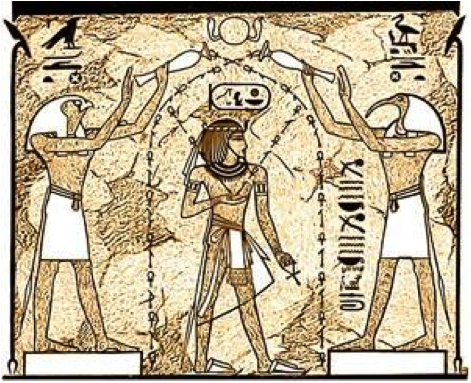-->
This guest post is from my friend J Washburn, author of Dear Jeff: Candid Advice from an Older Brother on Preparing to Enter the Temple, which I reviewed back in October. He has some intriguing things to share that can give us some insight on part of the temple ceremonies. I've found these insights extra meaningful in helping me better understand the significance of the initiatory ordinance.
Washing and Anointing
I’d like to share some thoughts I’ve had about the Initiatory temple ceremony, specifically about washing and anointing.
The symbolism of washing is pretty straightforward. I don’t mean to downplay it—it’s definitely worth pondering, but you’re already familiar because of baptism: It’s about cleansing. And it’s about what’s in the past—it’s looking backward.
Anointing is not quite so obvious, so let’s dig a little deeper.
In ancient times, kings and priests were the highest ranks in society—King Mosiah and Priest Alma are a good example; you see the pattern throughout the Bible too. These were the greatest titles a mortal could receive, and to be given either of them you had to be anointed. Basically, anointing is a priesthood ordinance that involves the pouring of sacred oil from a horn onto the initiate.
In The Old Testament, kings to be—that is, boys whose destiny it was to become a king—were anointed to that position. One of the most memorable instances of this is when David was anointed as a boy:
Then Samuel took the horn of oil, and anointed him in the midst of his brethren: and the Spirit of the Lord came upon David from that day forward. (1 Samuel 16:13)
But when David was anointed at that moment, he didn’t become king immediately. Instead, his anointing affirmed his future calling—he was anointed to become king. Later, in 2 Samuel 2:4, he was anointed king—the actual thing this time. So an anointing can be looking forward to a future event, or it can be the event itself.
The picture below shows an Egyptian king being anointed, which is another example of the second kind of anointing (from the Jewish Encyclopedia). Incidentally, in his hand the king holds an ankh, a symbol representing eternal life.
The word Christhas roots in the Greek word khristos, which means “the anointed.” Khristosis a translation of the Hebrew word mashiah, or, as we say in English, messiah—which also means “the one who was anointed.” Peter taught us that Christ was “foreordained before the foundation of the world” (1 Peter 1:20)—in other words, he was anointed to his calling ahead of time. John the Revelator said Christ was “the Lamb slain from the foundation of the world” (Revelation 13:8). God the Father testified of his son’s anointing, saying he was “my Beloved and Chosen from the beginning, [who] said unto me—Father, thy will be done, and the glory be thine forever” (Moses 4:2). Christ also testified of his own pre-appointed destiny when he spoke to the brother of Jared:
I am he who was prepared from the foundation of the world to redeem my people. Behold, I am Jesus Christ. I am the Father and the Son. In me shall all mankind have life, and that eternally, even they who shall believe on my name; and they shall become my sons and my daughters. (Ether 3:14)
This scripture is especially cool because it looks forward in two ways: It mentions Christ’s anointing looking forward to what he would do; then it also looks forward to what’s in store for us mortals: “They shall become my sons and daughters.” In other words, we’ll eventually inherit Christ’s perfection as his spiritual offspring (see Mosiah 5:7). Perhaps when that promise is fulfilled, it will be a ceremony confirmed with oil too.
Now, one final example: A Melchizedek Priesthood holder occasionally gets opportunity to administer to the sick. The church’s Handbook 2 explains that it takes two priesthood holders: The first pours the oil, then puts his hands on the person’s head (just like the Savior did, I might add), and says the words of anointing. Then with both priesthood holders putting their hands on the person’s head, the second priesthood holder sealsthe anointing and adds a blessing (see 20.6.2-3). This seems to match up with the immediate type of anointing, where you actually become king, or, in this case, where you actually become healed. But it might also be the kind that looks forward to healing (it happens, as they say, on the Lord’s timetable and not our own).
So to sum up, washing purifies the past, and anointing promises the future. Anointing looks forward. And just as Christ was anointed for his great mission long before it ever happened, we can be anointed looking forward to our destinies, as his children and his heirs.
This is the purpose of the initiatory ordinance.
J Washburn is the author of several books, including an incredibly straightforward temple prep guide called DEAR JEFF. You can learn about his quirks at www.jwashburn.com. And if you enjoy reading, you’ll want to sign up for his monthly letter, which includes a free ebook called HIGH ADVENTURE.
Continue reading at the original source →






